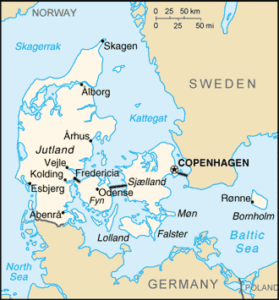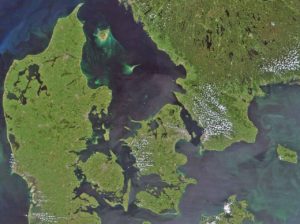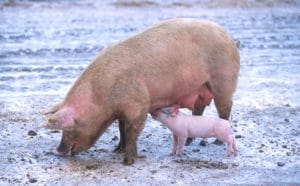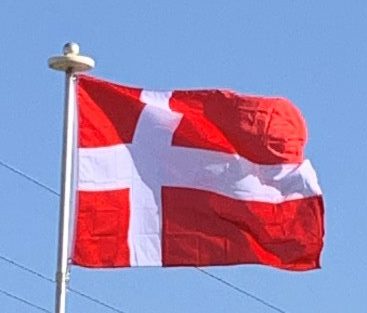
The country occupies a total area of 42,924 square kilometers (16,573 sq mi), and land area of 42,394 square kilometers (16,368.4 sq mi), the latter comparable to that of Estonia. The area of inland water is 700 km2 (270 sq mi), variously stated as from 500 – 700 km2 (193–270 sq mi). Lake Arresø northwest of Copenhagen is the largest lake.
The country is flat with little elevation, having an average height above sea level of 31 metres (102 ft). The highest natural point is Møllehøj, at 170.86 meters (560.56 ft). A sizable portion of Denmark’s terrain consists of rolling plains whilst the coastline is sandy, with large dunes in northern Jutland. Although once extensively forested, today Denmark largely consists of arable land. It is drained by a dozen or so rivers, and the most significant include the Gudenå, Odense, Skjern, Suså and Vidå—a river that flows along its southern border with Germany.

The Kingdom of Denmark includes two overseas territories, both well to the west of Denmark: Greenland, the world’s largest island, and the Faroe Islands in the North Atlantic Ocean. These territories are self-governing and form part of the Danish Realm.
Economy:
Denmark has a developed mixed economy that is classed as a high-income economy by the World Bank. In 2017 it ranked 16th in the world in terms of gross national income (PPP) per capita and 10th in nominal GNI per capita. Denmark’s economy stands out as one of the most free in the Index of Economic Freedom and the Economic Freedom of the World. It is the 10th most competitive economy in the world, and 6th in Europe, according to the World Economic Forum in its Global Competitiveness Report 2018.
According to the International Monetary Fund, Denmark has the world’s highest minimum wage. As Denmark has no minimum wage legislation, the high wage floor has been attributed to the power of trade unions. For example, as the result of a collective bargaining agreement between the 3F trade union and the employers group Horesta, workers at McDonald’s and other fast food chains make the equivalent of US$20 an hour, which is more than double what their counterparts earn in the United States, and have access to five weeks’ paid vacation, parental leave and a pension plan. Union density in 2015 was 68%.

Once a predominantly agricultural country on account of its arable landscape, since 1945 Denmark has greatly expanded its industrial base and service sector. By 2017 services contributed circa 75% of GDP, manufacturing about 15% and agriculture less than 2%. Major industries include wind turbines, pharmaceuticals, medical equipment, machinery and transportation equipment, food processing, and construction. Circa 60% of the total export value is due to export of goods, and the remaining 40% is from service exports, mainly sea transport. The country’s main export goods are: wind turbines, pharmaceuticals, machinery and instruments, meat and meat products, dairy products, fish, furniture and design. Denmark is a net exporter of food and energy and has for a number of years had a balance of payments surplus which has transformed the country from a net debitor to a net creditor country. By 1 July 2018, the net international investment position (or net foreign assets) of Denmark was equal to 64.6% of GDP.
